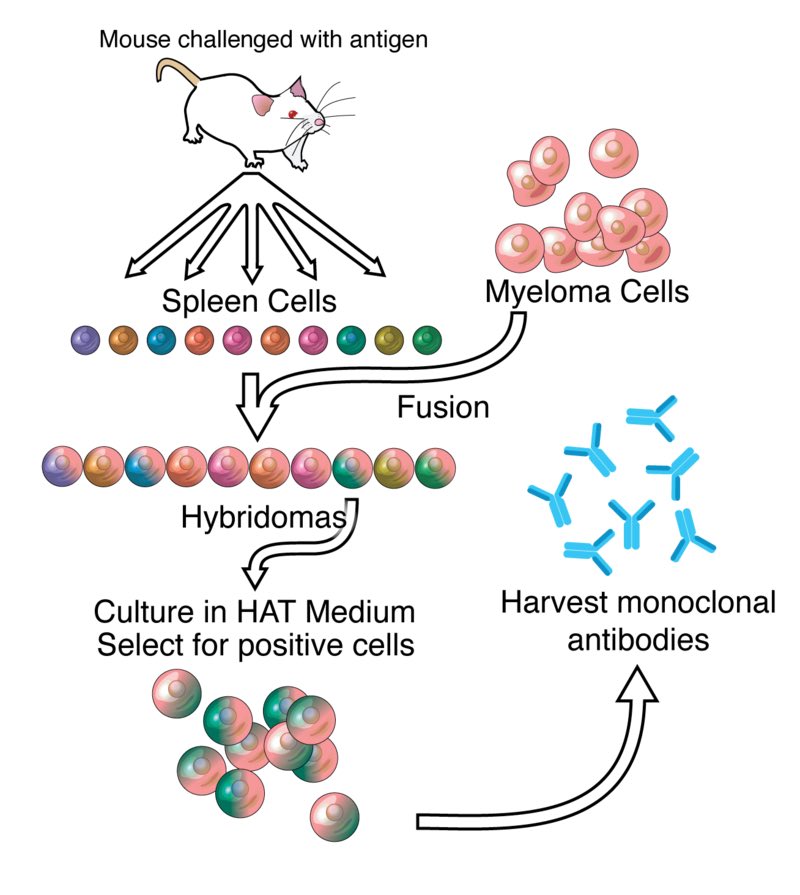It’s been 40 years now since the first monoclonal antibodies have been manufactured by researchers from UK’s Medical Research Council (MRC). Let’s go back to the beginning and see how they became global blockbusters.
One cannot imagine today’s medical portfolio without monoclonal antibodies. Checkpoint therapies against cancer, immunosuppressives treating multiple sclerosis, vaccines against everything … all based on monoclonal antibodies. And many of them are blockbusters just like the second best-selling drug on the market: The arthritis-treating Humira, which yielded $11bn in 2014.
These target-specific tools are not only valuable in fighting diseases, but also in diagnosing them, or testing pregnancy, determining blood types, verifying proteins in the lab, tracking down viruses in animals and so on and so on …
César Milstein and Georges Köhler © MRCIt was back in the 1970s when monoclonal antibodies were firstly isolated by scientists of UK’s Medical Research Council: César Milstein and Georges Köhler. Their technique was based on a breakthrough discovery from Henry Kunkel in 1951. He made a surprising finding in patients with multiple myeloma. Instead of producing a vast variety of antibodies, as it would be normal, the mutated plasma cells produced just one type of antibody.
César Milstein and Georges Köhler established the first technique to fuse antibody-producing cells with those myeloma cells, producing the first monoclonal antibodies. This breakthrough was worth a Nobel Prize in Physiology or Medicine in 1984.

A side effect of these mouse-derived antibodies was that they could trigger a reaction of the human immune system. Therefore, antibodies had to be ‘humanized’. Since 1980, scientists were working on developing chimeric antibodies, which were products of fused human DNA-pieces in trangenic mice. Among them was another MRC scientist: Sir Greg Winter, who linked antigen-binding loops from rodents into human antibodies.
Based on his findings, he co-founded of one of the most succesful biotech companies ever, the Cambridge Antibody Technology. It brought the first fully human monoclonal antibody on the market, the blockbuster Humira. In 2006, the company was absorbed by AstraZeneca for £700 million.
MRC’s Laboratory of Molecular Biology in Cambridge © MRCAll of these discoveries have earned the Medical Research Council a lot of money thanks to patent-related revenues. According to the Financial Times, they were responsible for almost £600 million of their income, but the patents of Sir Greg Winter are going to expire in the upcoming years and MRC’s revenues from intellectual property are expected to drop from £40 million in 2014-15 to £5m in 2016-17.
The Biotech scene owes a lot to the MRC as the monoclonal antibodies paved the way to a whole new world of therapies. It’s the perfect example of how a fundamental discovery moved to the industry and then to the patients to have a significant impact on the world.




